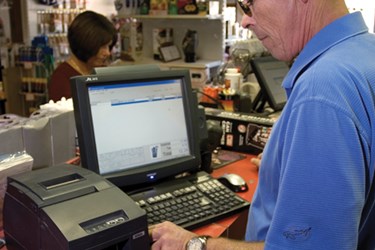Technology Integration Issues Challenge Retailers' Omni-Channel Implementation

By Anna Rose Welch, Editorial & Community Director, Advancing RNA

Retailers struggle with cross-channel visibility, sharing customer data and analytics, and associate training
Omni-channel is proving to be far from a seamless process for retailers, new research from Accenture and hybris software shows. According to the research findings, retailers say technology integration issues are hindering their ability to offer customers seamless retailing across all channels. This proves to be a huge problem for retailers, especially since retailers now consider omni-channel maturity a key way to make a brand stand out. Indeed, retailers have made improving their ability to provide customers with a seamless shopping experience a top priority. However, for a whopping 94 percent of those surveyed, a number of significant barriers still stand in each company’s way of becoming an integrated omni-channel company.
According to the results of the study, 40 percent of retailers report having difficulties integrating back-office technology across all of their channels. One of the key areas retailers know they need to improve is their ability to provide customers with a consolidated and accurate real-time inventory across stores and distribution centers. This transparency is key, as customers have begun to demand access to physical store inventory information more often. Seventy-one percent of shoppers expect to view in-store inventory online and 50 percent expect buy online, pick up in store (BOPS) capabilities. However, only 36 percent of retail decision makers surveyed say that their companies are able to offer customers the cross-channel visibility and BOPS initiatives they’re craving. Considering the fact that 39 percent of consumers say they would be unlikely or very unlikely to visit a retailer’s store if its website didn’t provide access to brick-and-mortar inventory, this problem requires immediate attention. Brian Walker from hybris says, “As customers expect retailers to provide consistent and contextual service across every channel and interaction, retailers need to adopt new technologies that enable this critical transformation to omni-channel customer engagement and service. This is going to be vital to meeting customers’ expectations and, frankly, survival for retailers.”
Retailers also cited several other barriers keeping them from bridging the “omni-channel commerce gap.” As omni-channel becomes a priority for retailers, more companies have begun to organize and hire omni-channel teams. Indeed, nearly half (46 percent) of those surveyed say they already have a team in place. However, these teams are often faced with conflicting priorities and organization silos that hamper implementation of omni-channel strategies. Retailers also cite issues sharing customer data and analytics between channels, countries, or locations, and a lack of in-store associate training as large barriers preventing them from achieving omni-channel.
Read how planning can drive customer-centric growth
While the online channel is a key part of omni-channel, Accenture and hybris emphasize that retailers must make the physical store a strategic asset in order to compete effectively against online-only retailers. In fact, in-store pick-up of goods has become a key capability that consumers expect from a retailer, especially as they look to save money on shipping costs. Nearly half (47 percent) of customers surveyed said they use in-store pickup options to avoid shipping costs, while 25 percent of them cite the convenience of being able to pick up the item on the day ordered.
In light of these results, hybris’ Walker calls retailers to action, encouraging them to keep a close eye on all channels equally in order to “plug gaps” that will result in disappointed customers. “The research indicates that many retailers are operating with a ‘false state of omni-channel comfort,” Walker says. “The reality is that the customer is way ahead of many retailers in defining what competitive shopping patterns are, not only across channels, but within each channel. If retailers are unaware of, or unwilling to acknowledge, these competitive threats then their business will go to other retailers agile enough to plug these gaps, and so provide the omni-channel sales experience customers are demanding. Retailers that fail to understand the significance of this gap in service and sales delivery are leaving themselves exposed to a significant competitive disadvantage.”
